Author Marc Newman ◦
Leioproctus muelleri (Megamouth) female about to enter nest. Ron and I went straight to the location as we were armed with lat/lon coordinates. Luckily we were able to drive right there after a spraying contractor unlocked the gate into the “Forest Reserve” for us. There was no activity at 9:30 AM, the guard males were obvious once we located their holes, at around 10:30 we noticed flying females and by midday the females were busy returning with pollen.

I got excited when I saw this but alas, just an ant.
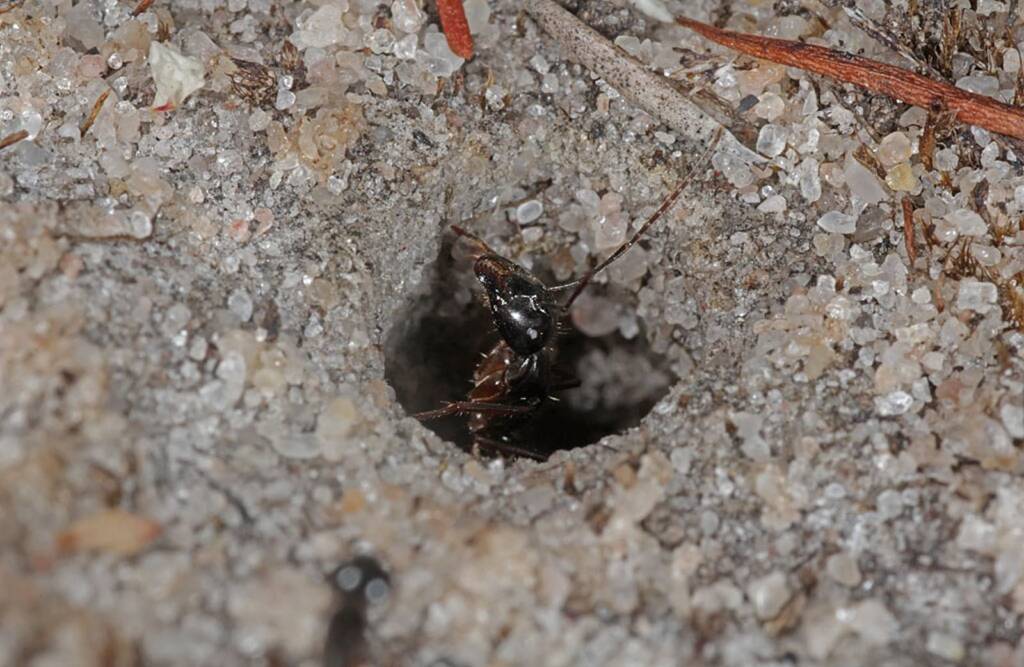
But then we started to see these. Guard bees, presumably male. There was one in every hole we saw.
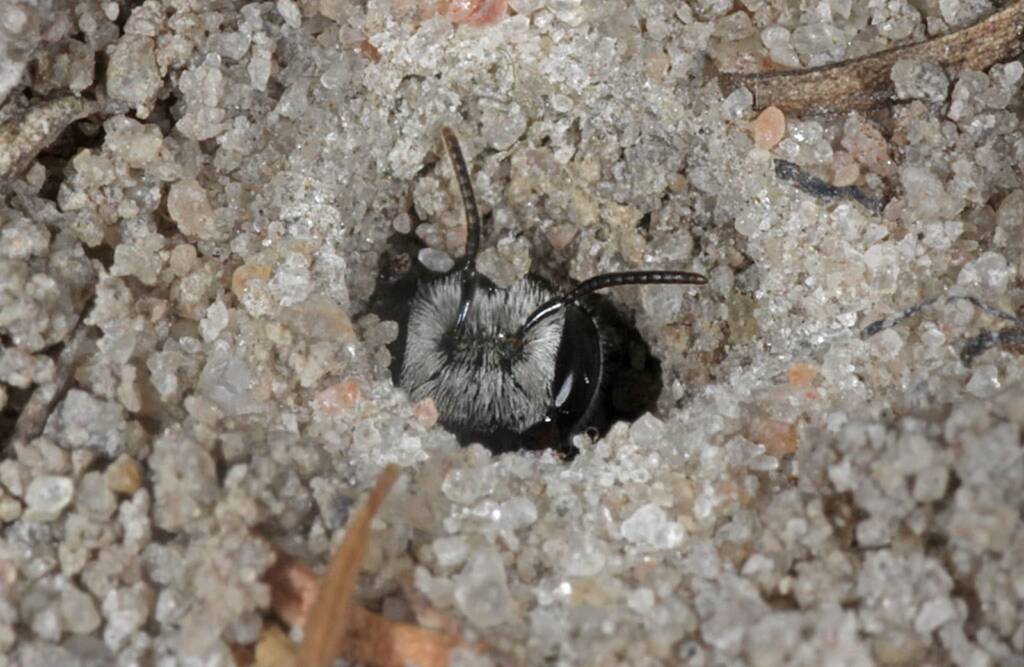
So we prepared.
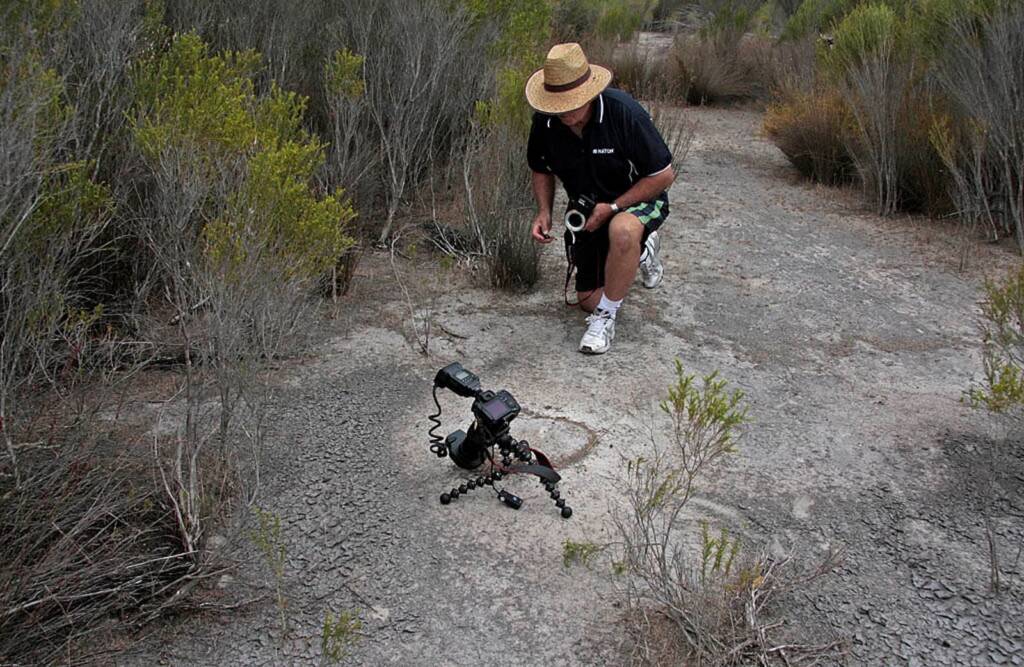
Eyes in the sky…

A male checking if a resident female might be interested. Correction, a female… (hairs on scopa). Don’t know what is happening here as she backs out fairly quickly.

Females were continually checking out the nests in the vicinity,
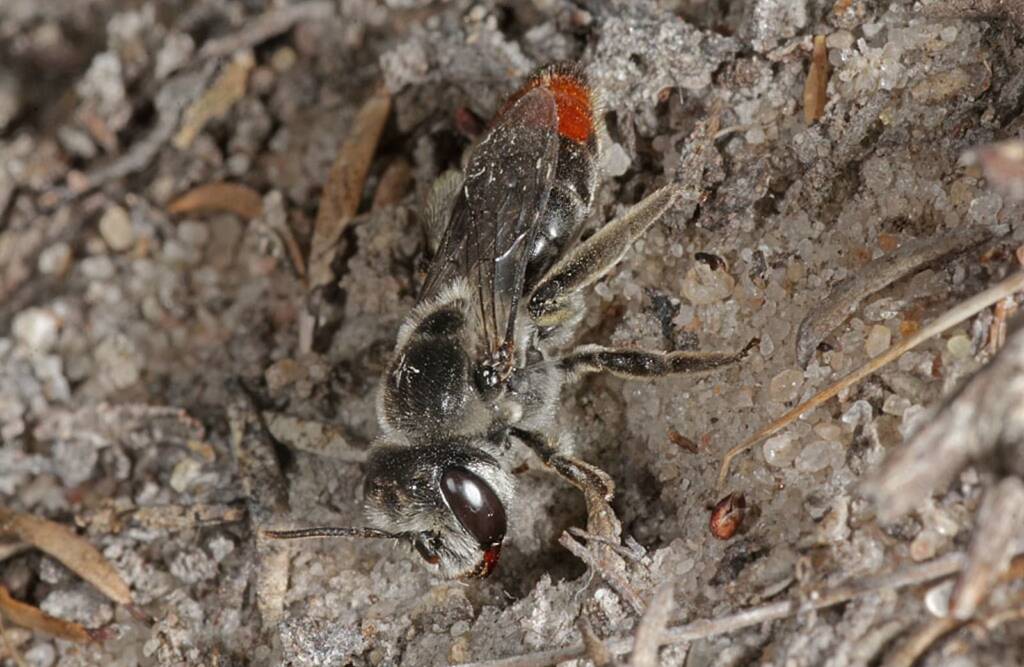
There were at least 6 nests in the immediate area.

And they didn’t seem to mind our presence.

We waited three and a half hours and finally got a female returning from foraging. I covered her nest hole with a bit of soil so she had to pause and dig her way in. She was away for about 20 minutes and returned to find me straddling her hole. She flew around me for about 20 times before deciding I wasn’t a threat.
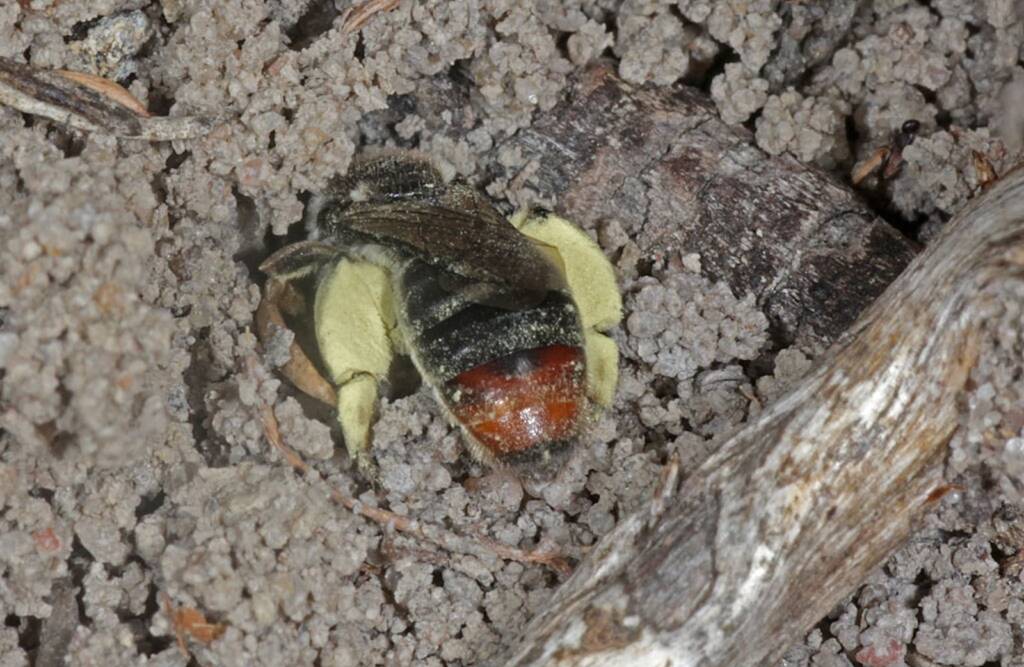
Another interesting thing is that this hole was the only newly excavated hole we saw. There had been very heavy rain 5 days previously and other holes showed evidence of rain. Guard bee face in evidence.

Footnote & References
- Leioproctus muelleri (Megamouth), Marc Newman (Guest Author), Flickr
Check out more blogs and contribution by Marc Newman.
